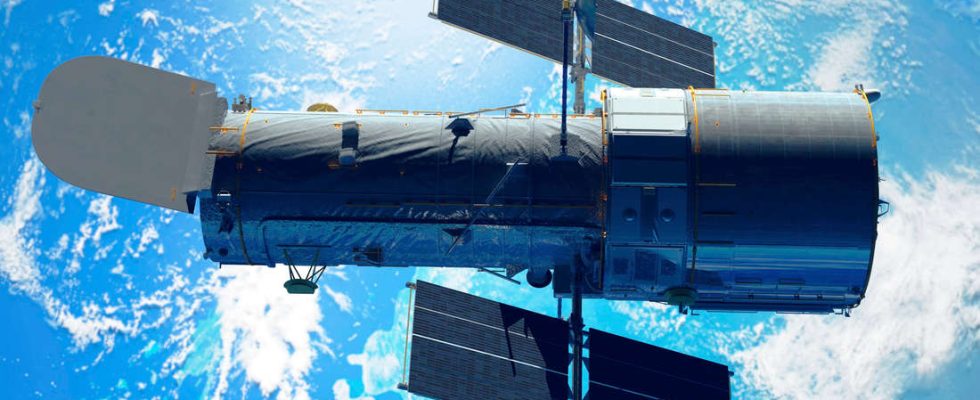The Hubble space telescope has discovered an exoplanet with water vapor. New perspectives for life-friendly atmospheres outside our galaxy?
Washington, DC/Paris – Using the NASA/ESA Hubble Space Telescope, astronomers discovered the smallest exoplanet where water vapor has been detected in the atmosphere. The two space organizations announced this on Friday (January 25, 2024) in a press release known.
With about twice the diameter of Earth, the mini-planet “GJ 9827d,” 97 light-years away, could serve as a model for water-rich atmospheres in our galaxy. Björn Benneke from the Université de Montréal explains: “This would be the first time that we can directly show through atmospheric detection that these planets with water-rich atmospheres can actually exist around other stars. This is an important step in determining the occurrence and diversity of atmospheres on rocky planets.”
Mysterious shell: Searching for water vapor and residue on GJ 9827d
It is unclear whether Hubble has spectroscopically detected low levels of water vapor in a dense, hydrogen-rich atmosphere or whether the planet’s atmosphere consists largely of water left behind after the original hydrogen/helium atmosphere was vaporized by the star’s radiation.
“Our observation program was specifically developed with the aim of not only detecting the molecules in the planet’s atmosphere, but also specifically searching for water vapor,” explains the lead author of the scientific paper, Pierre-Alexis Roy from the Université de Montréal. “Both results would be exciting, regardless of whether water vapor is dominant or just a tiny species in a hydrogen-dominated atmosphere.”
Benneke adds, “So far we have not been able to directly detect the atmosphere of such a small planet. And we are now slowly getting into this area. At some point, as we study smaller planets, there must be a transition where these small worlds no longer have hydrogen and have atmospheres more like Venus (which is dominated by carbon dioxide).”
Despite the atmosphere on planet GJ 9827d: the search for extraterrestrial life continues
At a temperature of around 425 degrees Celsius, the planet would be a hostile, steamy world if its atmosphere consisted primarily of water vapor, comparable to the conditions on Venus.
The research team now faces two possible scenarios: either the planet preserves its hydrogen-rich shell and becomes a mini-Neptune, or it could be a warmer variant of Europa’s moon of Jupiter, with a crust-covered water mass twice the size of Earth. Björn Benneke explains: “GJ 9827d could be a mixture of water and rock, with potential water vapor on a smaller, rocky body.”
However, a water-rich residual atmosphere at GJ 9827d suggests that it formed further away from its host star, where it is colder and water is present in the form of ice. As it moved closer to the star, it received more radiation, causing the hydrogen to heat up and possibly escape. Alternatively, one theory suggests that the planet was formed near the hot star, with a trace of water in its atmosphere. (ls)

